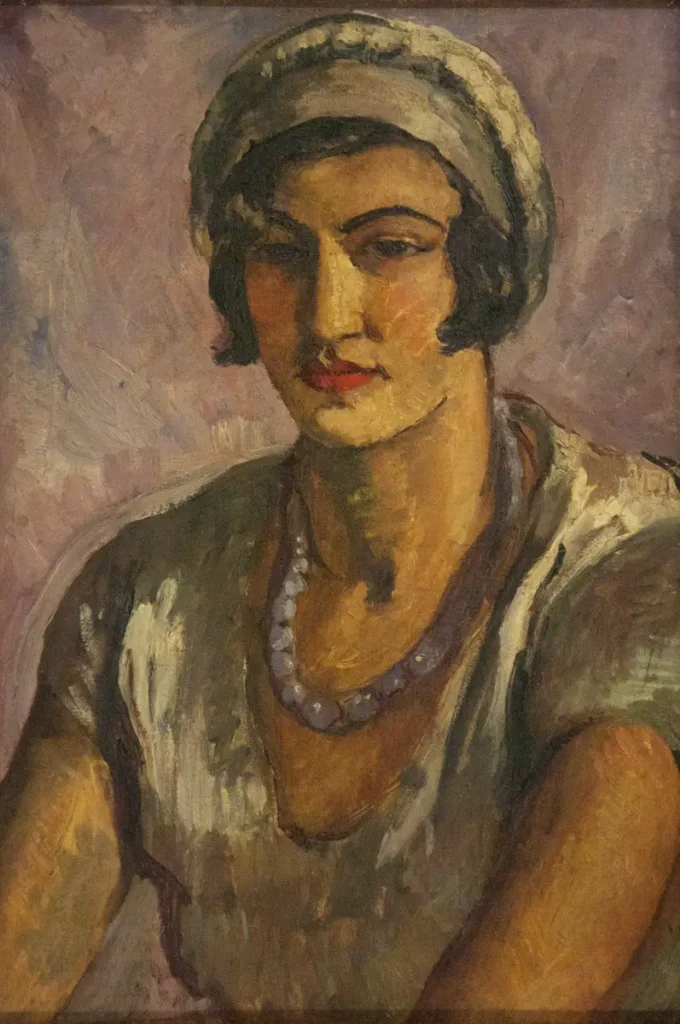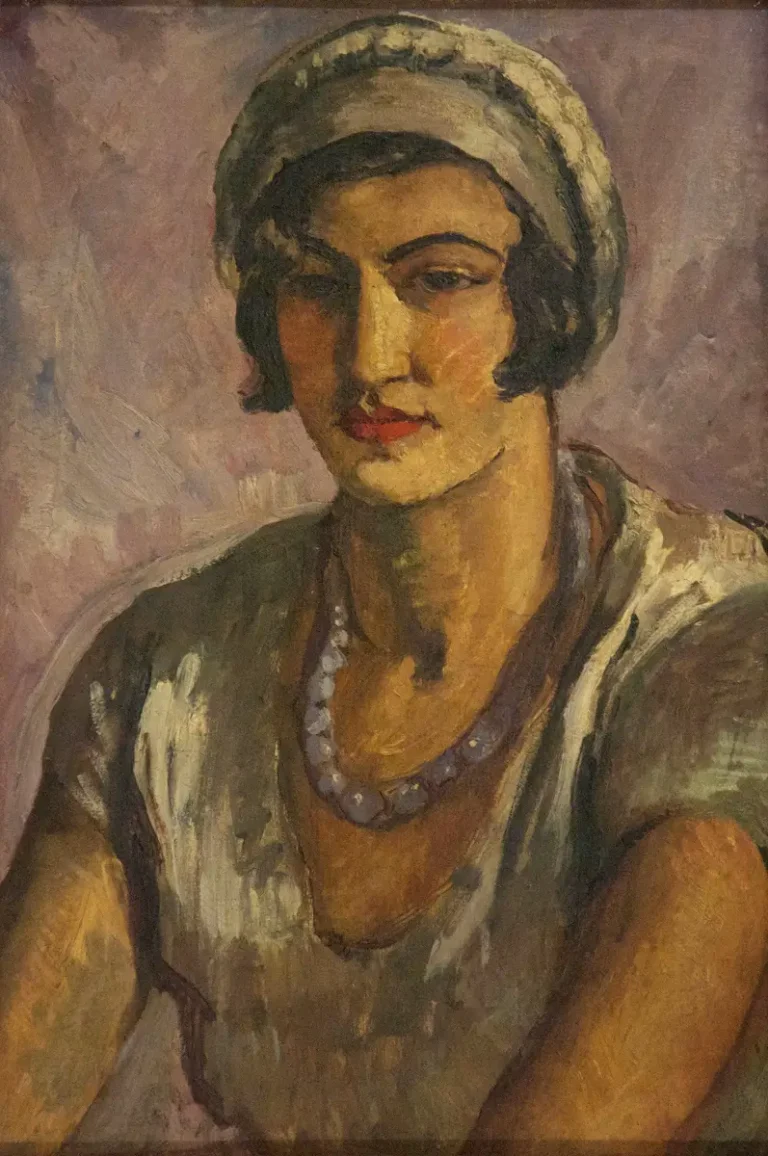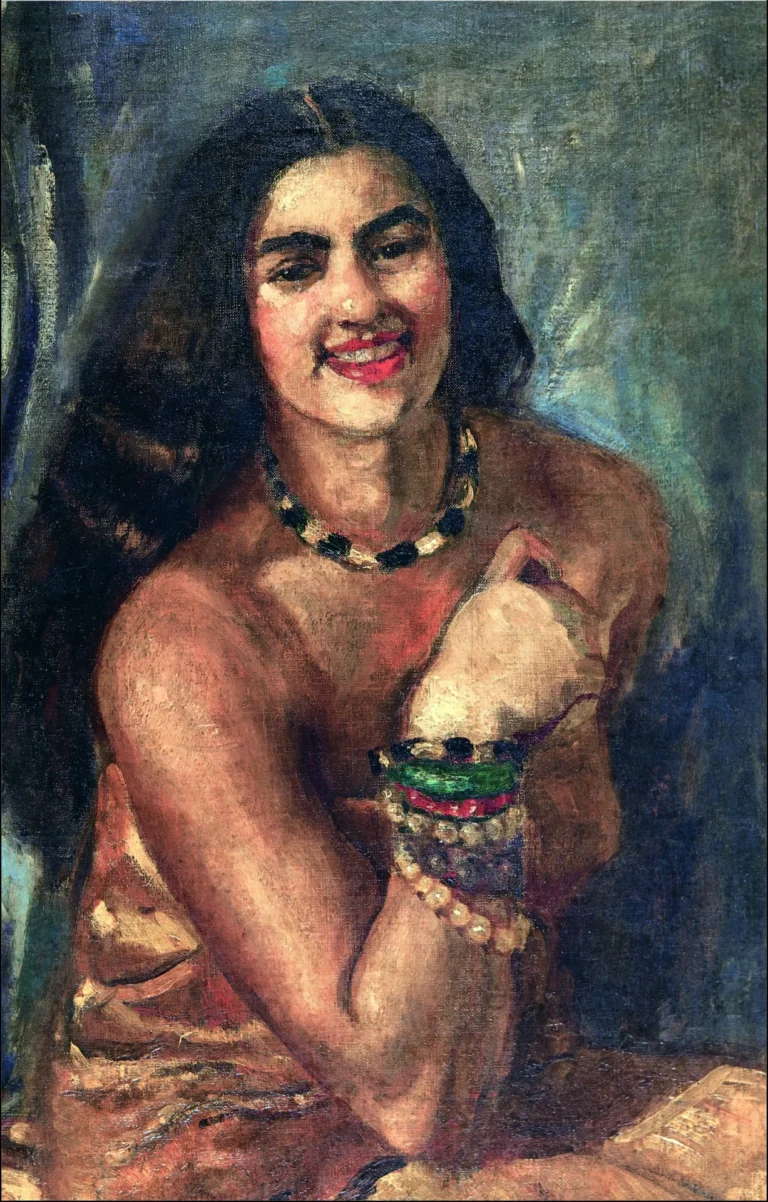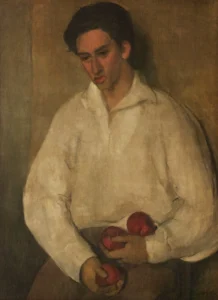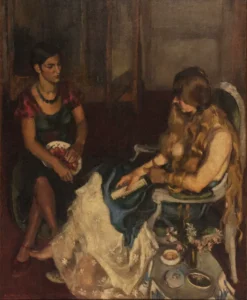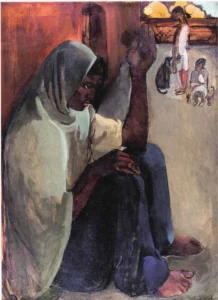Girl In Mauve (1931)
Created in 1931, Girl In Mauve by Amrita Sher-Gil is an oil on canvas that exemplifies the artist's transition from European styles to more Indian expressions. Measuring 36 × 53.7 cm, this work presents a young woman, enveloped in a graceful mauve setting, capturing the essence of femininity and the influence of Western art. The painting is part of the distinguished collection at the National Gallery of Modern Art in New Delhi, marking both an important cultural and historical artifact in Sher-Gil's oeuvre.
1931
About the Artwork
Amrita Sher-Gil, often hailed as one of India's first modernist artists, painted Girl In Mauve during her time in Paris in 1931. This period marked a significant phase in her artistic development, rooted in the European artistic traditions she immersed herself in. The artwork symbolizes her early explorations of identity and femininity, set against a backdrop of Western influences that would later give way to a deeper connection with her Indian heritage. Sher-Gil's profound ability to capture emotion and character through her subject is on full display here, and the painting reflects not only her personal journey but also the broader narrative of Indian women's roles in art during a time of cultural transition. The artwork's inclusion in the National Gallery of Modern Art underscores its importance as a pivotal piece in understanding both Sher-Gil's legacy and the evolution of modern art in India.
Did You Know
Amrita Sher-Gil is often regarded as one of the pioneers of modern Indian art, breaking ground for future generations of female artists in India with her unique blend of Western techniques and Indian subject matter.
While Sher-Gil’s early work was heavily influenced by European art, her later pieces incorporated Indian themes and aesthetics, showcasing her evolution as an artist who straddled both cultures.
Sher-Gil’s works, including Girl In Mauve, continue to be celebrated for their emotional depth and narrative strength, solidifying her legacy as a transformative figure in the landscape of modern Indian art.




